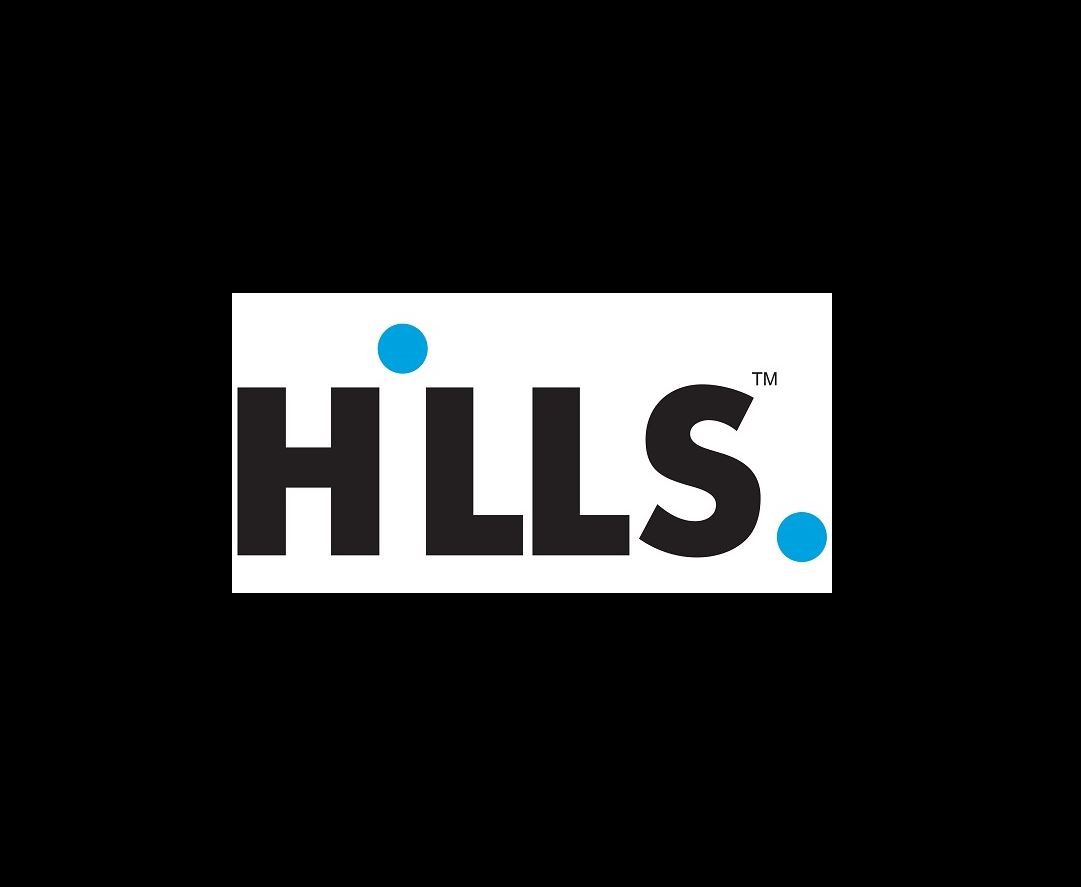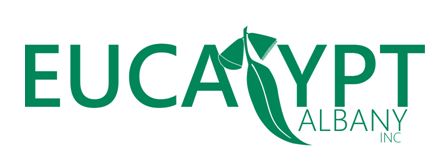Title Page
-
Site conducted
- Malone Center
- Blue Ridge Office
- Tryon Rd Farm
- Camden Garden
- Geer St Garden
- Durham Child Food Hub Warehouse
-
Conducted on
-
Prepared by
All Work Sites
Electrical Safety
-
Sufficient access and working space is provided and maintained around all electrical equipment to permit ready and safe operations and maintenance?
-
In wet or damp locations, electrical tools and equipment are appropriate for the use or location or otherwise protected.
-
Disconnecting switches and circuit breakers are labeled to indicate their use or equipment served.
-
Cord-connected, electrically operated tools and equipment are effectively grounded or of the approved double insulated type.
-
Cord-connected, electrically operated equipment, and flexible cord sets (extension cords) are visually inspected before use for external defects (e.g., loose parts, deformed and missing pins, or damage to outer jacket or insulation) and for evidence of possible internal damage (e.g., pinched or crushed out jacket).
-
Flexible cord sets (extensions cords) used with grounding-type equipment have grounding conductors.
Ergonomics
-
Managers demonstrate their leadership in reducing Musculoskeletal Disorders (MSDs) by encouraging workers to participate in reducing MSDs and providing time and money to eliminate ergonomic risk factors.
-
Workers participate in the process of identifying and eliminating ergonomic risk factors.
-
Existing problems have been identified by reviewing OSHA 300 logs, workers' compensation records, first aid logs, accident and near-miss investigation reports, insurance company reports, or employee reports of symptoms.
-
Workers, supervisors, and managers are trained on the signs and symptoms of MSDs, including how to report early signs and symptoms of MSDs and their role in reducing MSDs.
-
A worksite analysis has been performed to identify ergonomics-related hazards with input from workers.
-
Steps have been taken to reduce the risk of MSDs by implementing engineering controls (e.g., using devices to lift heavy objects, reducing the weight of a load, repositioning workstations), administrative and work practice controls (e.g., rotating tasks to mitigate factors), and personal protective equipment. Engineering controls are the most desirable when possible.
-
Training has been provided on using controls to reduce MSDs.
-
Workers participate in the evaluation of controls to reduce ergonomic risk factors in their work area.
-
A process is in place to periodically evaluate the steps taken to identify and control ergonomic risk factors, including management leadership, employee involvement, training, identification and control of risk factors, and early reporting and treatment of MSD symptoms.
Exit Routes and Emergency Planning
-
Doors that are required to serve as exits are designed and constructed so that the path of exit travel is obvious and direct.
-
Exit doors and doors in the required path to the exit are not locked, blocked, or otherwise obstructed.
-
Exit doors can be opened from the direction of exit travel without the use of a key, tool, or any special knowledge or effort when the building is occupied.
-
Exit doors are side-hinged and swing.
-
No revolving, sliding, or overhead doors serve as required exit doors.
-
Panic hardware or fire exit hardware installed on a required exit door allows the door to open by applying a force of 15 pounds (6.80 kilograms) or less in the direction of the exit traffic.
-
Doors on cold storage rooms are provided with an inside release mechanism that releases the latch and opens the door even if the door is padlocked or otherwise locked on the outside.
-
Where exit doors open directly onto a street, alley, or other area where vehicles may be operated, adequate barriers and warnings are provided to prevent workers from stepping into the path of traffic.
-
Doors that swing in both directions and are located between rooms where there is frequent traffic are provided with viewing panels in each door.
-
Glass doors, glass panels in doors, windows, etc., that are subject to human impact, are made of safety glass that meets the requirements for human impact.
Exits, Exit Paths (Means of Egress)
-
There are sufficient exits to permit prompt escape in case of emergency.
-
The number of exits from each floor or level, and the number of exits from the building itself, are appropriate for the occupant load.
-
At least two means of egress are provided from elevated platforms, pits, and rooms where the absence of a second exit would increase the risk of injury from hot, poisonous, corrosive, suffocating, flammable, or explosive substances.
-
Routes (means of egress) to exits, when not immediately apparent, are marked with visible exit signs.
-
All exits are marked with exit signs that are illuminated either internally or by a reliable light source.
-
Exit signs are labeled with the word "EXIT" in lettering at least 6 inches (15.2 centimeters) high and the stroke of the lettering at least 3/4 inch (1.9 centimeters) wide.
-
Doors, passageways and stairways that are neither exits nor access to exits, but could be mistaken for exits, are appropriately marked "NOT AN EXIT," "TO BASEMENT,' "STOREROOM," etc.
-
Emergency lighting, where provided, is tested for 30 seconds each month, and annually for 90 minutes.
Fire Protection
-
If portable fire extinguishers are provided in the workplace, and designated workers are expected to use them, the workers are provided with initial training in their use and at least annually thereafter.
-
Portable fire extinguishers of the appropriate types(s) are provided in adequate numbers, and mounted in readily accessible locations.
-
Fire extinguishers are selected and provided for the types of materials in the areas where they are to be used.
-
Fire extinguishers are visually inspected monthly, and the inspection is recorded.
-
Fire extinguisher discharge nozzles are free from obstructions or blockage.
-
Fire extinguishers are fully charged and in their designated places.
-
Fire extinguishers receive an annual maintenance check, and the maintenance is recorded.
-
Fire alarm system has been certified, is in proper working condition, and is tested annually.
-
Testing and maintenance of automatic sprinkler systems is performed by a qualified worker or sprinkler contractor.
-
Automatic sprinkler system water control valves and pressure gauges are checked periodically.
-
Sprinkler heads subject to potential physical damage are protected by metal guards.
-
Proper clearance (minimum 18 inches) is maintained below sprinkler heads.
Chemical Hazards
-
A written plan has been developed to ensure that workers are informed and understand the hazards of chemicals in the workplace.
-
A list or inventory of all hazardous chemicals in the workplace has been prepared.
-
Safety Data Sheets (SDS) for each hazardous chemical in the workplace are up-to-date and readily accessible to workers.
-
Workers understand SDS and where to find them.
-
Workplace containers are labeled where required.
-
Workers are trained on the requirements of the hazard communication standard, hazards of chemicals, appropriate protective measures, and where to obtain additional information.
-
Workers are trained on the hazardous chemicals in their work area before initial assignment and when new hazards are introduced.
-
Workers understand labels received on shipped containers and details of the workplace labeling system.
-
The hazardous communication program is reviewed periodically to ensure it is meeting its objectives.
-
A written hazardous communication program is in place for the workplace.
-
Workers have been informed about all operations where hazardous chemicals are present.
-
Containers of hazardous chemicals are labeled and Safety Data Sheets are available.
-
Eye-wash fountains and safety showers are provided and maintained in areas where hazardous chemicals are handled.
-
Workers use appropriate personal protective clothing and equipment when handling hazardous chemicals.
-
Chemicals are kept in closed containers when not in use.
-
Standard operating procedures for cleaning up chemical spills are established and are being followed.
-
Corrosive liquids that are frequently handled have adequate means readily available for neutralizing spills.
-
Hazardous substances are handled in properly designed and exhausted booths or similar locations.
Emergency Treatment
-
Fully supplied first aid kits are easily accessible to each work area, are adequate for the particular area, and are periodically inspected and replenished as needed.
-
Any worker that had an exposure incident involving bloodborne pathogens received an immediate post-exposure confidential medical evaluation and follow-up.
-
Emergency phone numbers are posted.
Personal Protective Equipment (PPE)
-
Hazards that require the use of PPE have been identified.
-
For the hazards identified, appropriate and properly fitted PPE has been selected.
-
Affected workers use the appropriate PPE.
-
PPE is provided by the employer at no cost to the workers.
-
Workers have been trained on PPE procedures.
-
Appropriate eye or face protection is used when workers are exposed to hazards.
-
Protective eye and face protection devices comply with the requirements of the appropriate ANSI standards, or provide protection that is at least as effective as the comparable ANSI standard.
-
Protective gloves, aprons, shields, or other means are used where workers could be cut or where there is reasonably anticipated exposure to corrosive liquids, chemicals, or blood or other potentially infectious materials.
-
PPE is maintained in a sanitary condition and ready for use.
-
Appropriate procedures are in place to dispose of or decontaminate PPE contaminated with, or reasonably anticipated to be contaminated with, blood or other potentially infectious materials.
Walkways
-
Walking-working surfaces are kept clean, orderly, and in a sanitary condition.
-
Wet surfaces are covered with non-slip materials or where wet processes are used, drainage is maintained and where feasible, false floors, platforms, and mats are provided.
-
Holes in the floor, sidewalk, and other walking-working surfaces are repaired properly, covered, and otherwise made safe.
-
Material and equipment is stored in such a way that projections do not interfere with walkways.
-
Spilled materials are cleaned up immediately.
-
Aisles and walkways that pass near moving or operating machinery, welding operations, and similar operations are arranged so workers are not subjected to potential hazards.
-
Adequate headroom is provided for the entire length of aisles, walkways, and stairways.
-
Guardrails are provided wherever aisle, walkway, and stairway surfaces are elevated more than four feet (1.2 meters) above any adjacent floor or the ground.
-
Walking-working surfaces are inspected regularly and maintained in a safe condition.
-
Hazardous conditions on walking-working surfaces are corrected or repaired before workers use the surface again.
-
Workers are provided with a safe means of access to and egress from walking-working surfaces.
Warehouse Specific
Portable Ladders
-
Are all ladders maintained in good condition?
-
Are ladders used on slippery surfaces secured and stabilized?
-
Are ladders not placed in front of passageways without security measures?
-
Are workers maintaining three points of contact while climbing ladders?
-
Are workers not carrying objects that could cause them to lose balance while climbing?
-
Are broken or faulty ladders not in use?
-
Is the ladder base secured to prevent slipping on unstable surfaces?
-
Are extension ladders adjusted from the base?
-
Are all ladders routinely inspected for damage?
-
Are ladders with defects immediately tagged as "Dangerous: Do Not Use"?
-
Are metal ladders corrosion-resistant or protected against corrosion?
-
Are portable metal ladders marked with appropriate warning signs?
-
Are ladders used only for their intended purposes?
Materials Handling and Storage
-
Are materials handling equipment maintained in safe operating condition?
-
Is there safe clearance for materials handling equipment through aisles and doorways?
-
Are trucks and trailers secured during loading and unloading operations?
-
Are dockboards used when loading and unloading between vehicles and docks?
-
Are workers using powered industrial trucks properly trained and certified?
-
Are PIT operators evaluated at least once every three years?
-
Are PITs operated at safe speeds under all travel conditions?
-
Are loads handled within the rated capacity of the PIT?
-
Are PITs inspected for safety concerns at the beginning of each work shift?
-
Are PITs in need of repair removed from service immediately?
-
Hand and Portable Powered Tools and Equipment
-
Are appropriate safety glasses, face shields, and other PPE used while using hand tools or equipment that might produce flying materials or be subject to breakage?
-
Are all tools and equipment (both company and worker-owned) used at the workplace in good condition?
-
Have workers been advised of hazards caused by faulty or improperly used hand tools?
-
Are hand tools, such as chisels, punches, etc., which develop mushroomed heads during use reconditioned or replaced as necessary?
-
Are tools cutting edges kept sharp so that tools move smoothly without binding or skipping?
-
Are broken or fractured handles on hammers, axes, and similar equipment replaced?
-
Are tools stored in a dry, secure location where tampering is not possible?
-
Are worn or bent wrenches replaced?
-
Are appropriate handles used on files and similar tools?
-
Are portable fans provided with full guards or screens having openings 1/2 inch (1.2700 centimeters) or less?
-
Are portable circular saws equipped with the proper guards above and below the base plate or shoe?
-
Are circular saw guards checked to ensure that they are not wedged up, leaving the lower portion of the blade unguarded?
-
Are cord-connected, electrically operated tools and equipment effectively grounded or of the approved double insulated type?
Flammable and Combustible Materials
-
Is combustible scrap, debris and waste materials (oily rags, etc.) stored in covered metal receptacles and promptly removed from the worksite?
-
Are approved containers and tanks used to store and handle flammable and combustible liquids?
-
Are all connections on drums and combustible liquid piping vapor and liquid tight?
-
Are all flammable liquids kept in closed containers when not in use?
-
Are appropriate grounding and bonding methods used when transferring and dispensing flammable liquids to minimize the generation of static electricity?
-
Is liquefied petroleum gas (gasoline or diesel fuel) stored, handled, and used in accordance with safe practices and standards?
-
Are "NO SMOKING" signs posted on liquefied petroleum gas tanks?
-
Are "NO SMOKING" signs posted in areas where flammable or combustible materials are used and stored?
-
Are liquefied petroleum storage tanks guarded to prevent damage from vehicles?
-
Are all solvent wastes and flammable liquids kept in fire-resistant, covered containers until they are removed from the worksite?
-
Are safety cans used for dispensing flammable or combustible liquids at the point of use?
-
Are spills of flammable or combustible liquids cleaned up promptly?
-
Are storage tanks adequately vented to prevent the development of excessive vacuum or pressure as a result of filling, emptying, or atmosphere temperature changes?
-
Are storage tanks equipped with emergency venting that relieve excessive internal pressure caused by fire exposure?
Agriculture Specific
Respiratory Protection
-
Hazards that require the use of respiratory protection have been identified.
-
Appropriate respirators are provided for worker use.
-
Are workers trained on the correct usage and limitations of the respirators?
-
Are respirators NIOSH-approved for the particular application?
-
Are workers trained in the respiratory hazards they may be exposed to?
-
Are workers trained annually in the proper use of respirators, including maintenance?
-
Are respirators stored properly to prevent damage and contamination?
Materials Handling and Storage
-
Are materials handling equipment maintained in safe operating condition?
-
Is there safe clearance for materials handling equipment through aisles and doorways?
-
Are trucks and trailers secured during loading and unloading operations?
-
Are dockboards used when loading and unloading between vehicles and docks?
-
Are workers using powered industrial trucks properly trained and certified?
-
Are PIT operators evaluated at least once every three years?
-
Are PITs operated at safe speeds under all travel conditions?
-
Are loads handled within the rated capacity of the PIT?
-
Are PITs inspected for safety concerns at the beginning of each work shift?
-
Are PITs in need of repair removed from service immediately?
-
Hand and Portable Powered Tools and Equipment
-
Are appropriate safety glasses, face shields, and other PPE used while using hand tools or equipment that might produce flying materials or be subject to breakage?
-
Are all tools and equipment (both company and worker-owned) used at the workplace in good condition?
-
Have workers been advised of hazards caused by faulty or improperly used hand tools?
-
Are hand tools, such as chisels, punches, etc., which develop mushroomed heads during use reconditioned or replaced as necessary?
-
Are tools cutting edges kept sharp so that tools move smoothly without binding or skipping?
-
Are broken or fractured handles on hammers, axes, and similar equipment replaced?
-
Are tools stored in a dry, secure location where tampering is not possible?
-
Are worn or bent wrenches replaced?
-
Are appropriate handles used on files and similar tools?
-
Are portable fans provided with full guards or screens having openings 1/2 inch (1.2700 centimeters) or less?
-
Are portable circular saws equipped with the proper guards above and below the base plate or shoe?
-
Are circular saw guards checked to ensure that they are not wedged up, leaving the lower portion of the blade unguarded?
-
Are cord-connected, electrically operated tools and equipment effectively grounded or of the approved double insulated type?
Flammable and Combustible Materials
-
Is combustible scrap, debris and waste materials (oily rags, etc.) stored in covered metal receptacles and promptly removed from the worksite?
-
Are approved containers and tanks used to store and handle flammable and combustible liquids?
-
Are all connections on drums and combustible liquid piping vapor and liquid tight?
-
Are all flammable liquids kept in closed containers when not in use?
-
Are appropriate grounding and bonding methods used when transferring and dispensing flammable liquids to minimize the generation of static electricity?
-
Is liquefied petroleum gas (gasoline or diesel fuel) stored, handled, and used in accordance with safe practices and standards?
-
Are "NO SMOKING" signs posted on liquefied petroleum gas tanks?
-
Are "NO SMOKING" signs posted in areas where flammable or combustible materials are used and stored?
-
Are liquefied petroleum storage tanks guarded to prevent damage from vehicles?
-
Are all solvent wastes and flammable liquids kept in fire-resistant, covered containers until they are removed from the worksite?
-
Are safety cans used for dispensing flammable or combustible liquids at the point of use?
-
Are spills of flammable or combustible liquids cleaned up promptly?
-
Are storage tanks adequately vented to prevent the development of excessive vacuum or pressure as a result of filling, emptying, or atmosphere temperature changes?
-
Are storage tanks equipped with emergency venting that relieve excessive internal pressure caused by fire exposure?










